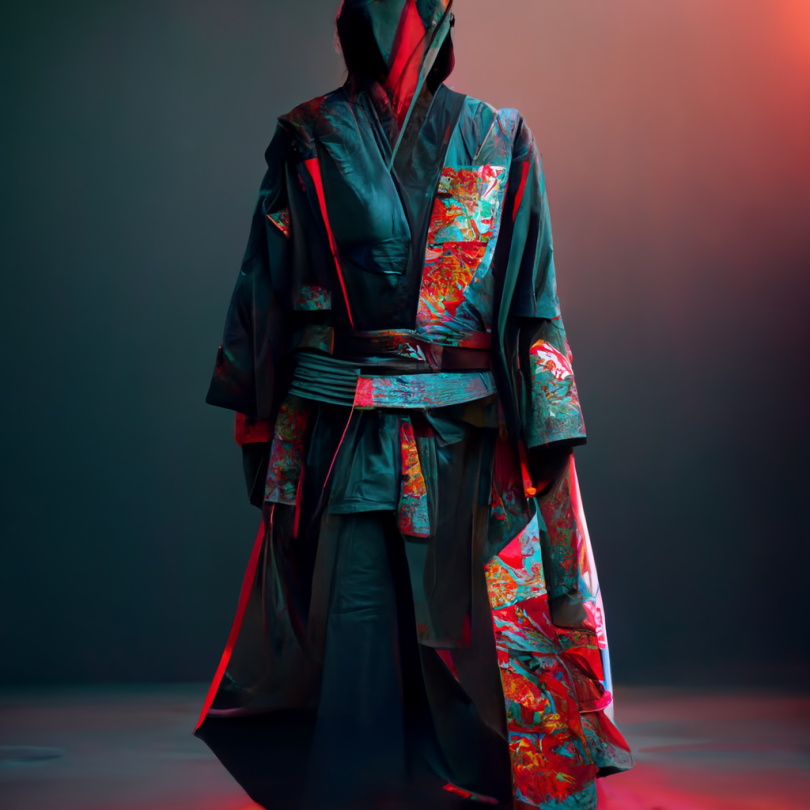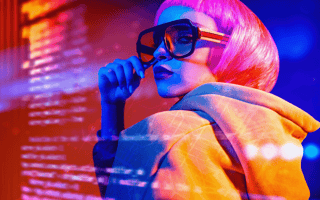Whether you’re scouting sales, scrolling through social media to check out trends or deciding on outfits for a vacation, fashion can be fun. It can also be vexing for both shopper and retailer (finding the right fit), as well as environmentally hostile (most returned clothing ends up in a landfill). Luckily, artificial intelligence may be in a position to help the fashion and apparel industry solve these pressing problems.
Top Uses for AI in Fashion
- Trend forecasting
- Creating better fit and more accurate sizing
- Authenticating items to prevent knockoffs
- Streamlining manufacturing
- Reducing returns
Artificial Intelligence in Fashion
Artificial intelligence helps players in the fashion ecosystem solve a host of problems. It helps both customers and manufacturers determine better-fitting clothing, which can make shoppers happier and reduce the industry’s environmental impact. Designers use AI to create fabrics and garments, and consulting firms use it to predict trends for their manufacturing clients. The magic lies in data collection. Repairing the fit issue, forecasting fashion trends and even authenticating upscale items (Cartier watches, Birkin bags) are all divined by collecting data.
“We are at the very early phases of this and it’s been mind-blowing already,” said Hussain Almossawi, a designer and computer-generated-imagery artist. “If that tells us anything, it’s that there is way more to come.”
8 Examples and Applications of AI in Fashion
Here are a few ways AI is making fashion smarter and more sustainable.
1. Designers Improve Fit With AI-Driven Data
Ill fit is the top reason for returning clothes bought online, and returns can cost a retailer up to 38 percent of the item’s original price, said Carlanda McKinney, founder and CEO of Bodify.
Bodify asks shoppers for photos, then uses computer vision to determine their measurements. Machine learning maps the measurements against data the company has stored. The end result for shoppers is a list of brands that fit them in the size they think they are.
Bodify’s data helps manufacturers cut garments to sizes that actually fit people, coordinate sizes of different types of garments and determine the best place to have their garments made.
Another startup, Fit for Everybody, provides shoppers with a video that shows them exactly where to measure themselves. Designers, who are Fit for Everybody’s paying customers, use the data to make patterns more in line with customers’ measurements. “You’re basically making clusters, you’re making five sizes that are going to encompass as many people as possible,” said Laura Zwanziger, founder and CEO. “The goal is to optimize each cluster.”
2. Shoppers Inform Their Decisions With AI Suggestions
Retailers can offer customers AI-powered virtual styling tools that assist customers in choosing items for their body type, skin tone and apparel needs.
For example, Styleriser makes software that employs AI in image consulting. Customers upload a picture to the retailer’s online store and a virtual stylist analyzes the photo. It recommends the best colors for the person’s skin tones and gets specific (wear cream instead of white, or charcoal gray instead of black). The tool boosts confidence in shopping, which in turn increases purchasing readiness by 80 percent, said CEO and cofounder Mark Hunsmann. This also means fewer returns, which contributes to the industry’s sustainability.
3. Creatives Bounce Ideas Off of AI Collaborators
Almossawi, the designer, taps AI for inspiration and idea generation. “As part of every designer’s process, the early phase involves a lot of explorations and ideation sessions,” ranging from bouncing around blue-sky ideas to brainstorming with colleagues. AI, he said, aids collaboration by expanding person-to-person collaboration to human-to-machine collaboration. “As crazy and interesting as AI is, it’s probably just in its infancy, and I can only see it getting better and doing much more than outputting images.”
For instance, Almossawi used AI to create a line of garments based on the Japanese kimono: “I thought it would be cool to look at designing different silhouettes with different kinds of textures and details.”

4. Customers Virtually Try On Clothes With AI Apps
AI-driven augmented and virtual reality tools help online shoppers more fully comprehend what a garment looks like and how it will look on them. Certain apps like DressX enable customers to project garments onto their actual bodies, then play with color, texture and accessories to get a look that’s just right.
AI can also put products in the right environment. “Product placement is a huge part of building hype around a product and telling a story of what the product is, and what it was designed for,” Almossawi said. “With AI, you can quickly generate cool and relevant backgrounds for your product in different styles.”
5. Retail Companies Reduce Waste With AI Tools
Fashion manufacturing has become a major source of plastic pollution and often leads to excessive waste. Nearly all returned items end up in a landfill, as restocking returns is often not financially feasible for retailers and high-fashion brands don’t want to devalue their names by selling to deep discounters.
AI can help on several fronts, starting with trends forecasting. Several firms use AI and machine learning to analyze images on social media, taking note of prints, shapes and colors to help their manufacturer clients figure out what’s going to sail and what’s going to sink. These companies also use AI to help brands figure out pricing strategies and steer clear of trends that are on their way out.
6. Brands Detect Counterfeits With AI-Powered Analysis
Deloitte created an AI tool, nicknamed Dupe Killer, to spot design infringements. It uses information from millions of photographs to detect subtle but distinct design elements like the shape of an item, a color or even a stitching pattern unique to the object. Dupe Killer helps brands spot and go after companies that are unlawfully using their design trademarks.
7. Businesses Enhance Marketing Campaigns With Generative AI
Generative AI is set to reshape numerous sectors, and the fashion industry is no exception. McKinsey estimates GenAI could bring in as much as an additional $275 billion into the apparel, fashion and luxury sector by 2026, and one way this is happening is through marketing and branding.
In 2023, various fashion brands like Valentino and Moncler used AI-generated images to deliver eye-catching marketing campaigns, while other brands like Ganni and Collina Strada hosted runway events featuring AI-inspired designs. Generative AI allows brands to experiment with a broader spectrum of styles, refresh clothing lines and expose consumers to new ideas before diving into physical design, saving companies time and energy in the process.
8. Consumers Craft Their Own Designs With Generative AI Tools
The fashion industry has often been viewed as exclusive, but this is quickly changing with the introduction of generative AI technologies. Everyday consumers can now envision their own styles and clothing by entering written prompts into AI generators, and businesses like Off/Script are capitalizing on this development.
Known as a “community-led product creation platform,” Off/Script gives both professional and amateur creators a chance to show off and sell their AI-designed clothing and accessories. Users can piece together mock designs in the platform’s design studio before other users vote on their favorite ideas. Off/Script then oversees the process of converting the winning designs into physical inventory to be sold.
Frequently Asked Questions
How is AI being used in fashion?
Fashion brands are using AI to forecast fashion trends, produce better-fitting clothing, limit the amount of returns and waste and boost marketing campaigns, among other applications.
What fashion brands are using AI?
Many fashion brands have embraced AI in some form, including big names like Valentino, Moncler, Collina Strada and Adidas.
Can I use AI to design clothes?
Designing clothes has become much more accessible, thanks to AI generators. Both professional and casual designers can enter written prompts into AI art generators to create new clothing, styles and ideas.
Can AI replace humans in fashion design?
AI aids designers by automating various tasks and simplifying the design process. However, it lacks the knowledge and awareness needed to create products that evoke emotional reactions from audiences and speak to specific cultural moments in fashion.




